Yoga is the ancient practice of poses, breathing and meditation. In the 20th century, different methods of yoga were introduced to the world. Ashtanga vinyasa yoga is one of the popular methods of yoga. It is known as modern day yoga of the Indian classic yoga.
As the name suggests, ashtanga yoga is a traditional Indian yoga. The yoga poses in ashtanga vinyasa yoga are performed with a particular flow of movements.
This yoga was introduced by K Pattabhi Jois who learnt from his teacher, Tirumalai Krishnamacharya; who is the architect of vinyasa. He created vinyasa krama yoga which is a beautiful combination of breathing with movements.
Tirumalai Krishnamacharya is known as the “Father of Modern Yoga”.His teaching principle is very simple which is “teach what is appropriate for an individual”. The same principle is applied to ashtanga vinyasa yoga by his student K Pattabhi Jois.
The aim of this method is to give importance to the combination of breathing with the postures and flow of movements to reach the desired goal.
The center of ashtanga vinyasa yoga is situated in Mysore, in the southern part of India. Therefore, this style of yoga is famous as Mysore style yoga.
ASHTANGA VINYASA YOGA VS OTHER YOGA PRACTICES
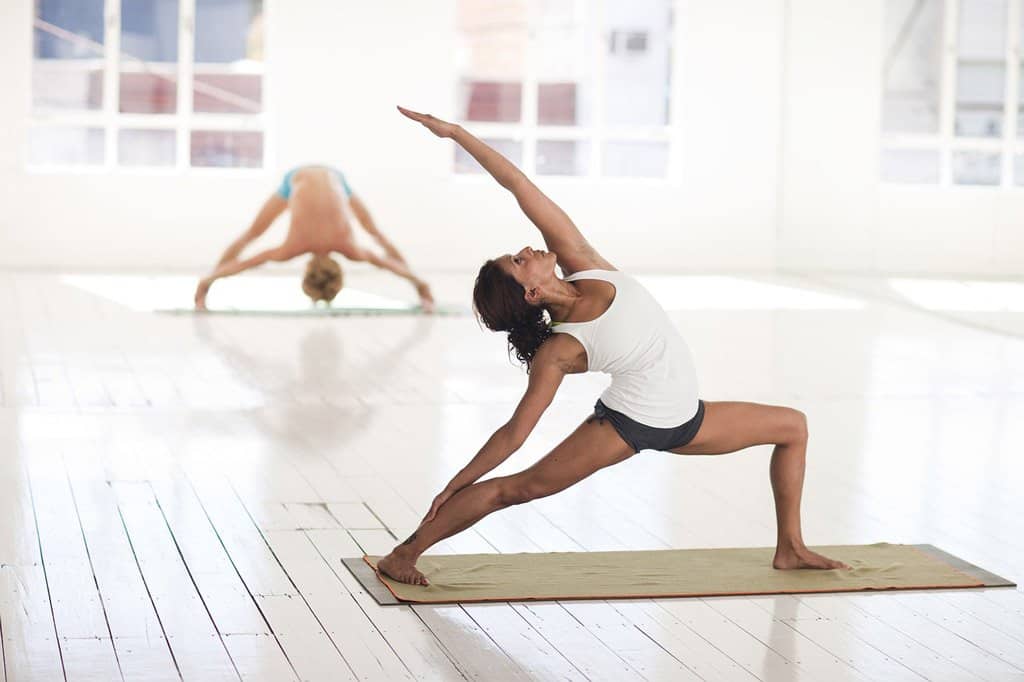
Difference Between Ashtanga Yoga and Ashtanga Vinyasa Yoga
Some will misunderstand that ashtanga yoga and ashtanga vinyasa yoga are the same. Though both follow the same poses, positions and breathing techniques, the way of performing postures is different.
Ashtanga yoga is the traditional yoga form. In traditional yoga, students follow the same sequence and series of poses in a particular way and it’s physically more demanding.
On the other hand, ashtanga vinyasa yoga has a changeable order with variations of poses. The main difference is that vinyasa links breath to flow of movements. The transition of one asana to another continues the smooth flow of movements.
Difference Between Power Yoga and Ashtanga Vinyasa Yoga
Power yoga is also inspired by ashtanga yoga. There is some confusion between power yoga and ashtanga vinyasa yoga among people. Some consider power yoga to be part of vinyasa yoga. One thing is clear, both have their inspiration from ashtanga yoga which is the only similarity between these two forms of yoga.
Power yoga is also known as gym yoga in the modern day. In power yoga, you do fewer poses but hold them for a longer time. Therefore, it helps to build our physical strength. Power yoga focuses more on body positions.
While in ashtanga vinyasa yoga, there are many poses which we do quickly with flow of movements. In this yoga, we concentrate more on the flexibility of our body as we link the poses together for a continuous movement. Ashtanga vinyasa yoga focuses more on breathing movement along with positions.
THE WAY OF PRACTICE
In anashtanga vinyasa yoga class, one teacher is generally present who guides, provides adjustment, or assists in correcting the posture of each student. He guidesstudents through performing himself or by describing the proper positions of asana to the students.
At some places, teachers guide the yoga instructions and emphasize on certain main points, for example tristhana (physical aspect of body) and vinyasa (breathing and movements of body).
The most distinguished point in this form of yoga is that a yoga student should memorize a sequence of yoga postures, which is assigned to him and should do practice in the same room along with other students without being led by teachers.
This style is known as “MysoreStyle”. It is the most common format of ashtanga vinyasa yoga. As discussed earlier, this is a unique method to study yoga, where every student practice their own position of the ashtanga vinyasa sequence in their own space. The class is not a regular one where the teacher leads the students by one sequence of the same posture. Here, the teacher’s role is as an assistant, who assists each student personally by giving instructions and helping to attain the postures in asanas.
THE PRINCIPLE OF ASHTANGA VINYASA PRACTICE
Tristana, vinyasa and bandha are the basic principles behind this form of ashtanga vinyasa yoga.
Tristana: Three Places of Action or Attention
Here, we give importance to the breathing system (pranayama), posture (asana), and looking place (drishti). This is like classic ashtanga yoga, where yoga practice helps to purify the body, mind, and nervous system.
The posture is known as asanas. The practice of asanas increases strength and flexibility of the body. It includes very little instructions about alignment. Breathing should be steady and even with inhale and exhale.
Drishti is the focus of eyes. During asana practice, your focus should be concentrated on one place, which will help you to balance your body. The common focus points are the nose, between the eyebrows, navel, thumb, hands, feet, right and left side, up and front. The posture will decide the focus of your eyes. If you are doing asanas in a sitting position, either you close your eyes or focus in the direction of your head.
Vinyasa: Simple Transition Between Asanas
The flowing movements which connect one asana with the next one. In modern vinyasa yoga, these transition movements coordinatethe breathing between asanas.Vinyasa helps to purify the blood, keep calm, smooth movements of the body during the practice of asanas.
In an interview, while describing breathing movements, Pattabhi Jois instructs practitioners that “You can inhale and exhale for 10-15 seconds. It totally depends on your breathing capacity. You can breathe 5-10 times per asana or 100 times also. It’s up to you, what is possible for you to do breathing practice per position along with balancing your body.” In a difficult posture, you may need more breath count than in a simple position.
Bandha
The last key principle in ashtanga vinyasa yoga is bandhas. Bandha actually means locks. During the practice of this yoga, internal body locks as in bandhas is crucial. The following explains three important bandhas:
1. Mula bandha:
Root lock at the pelvic floor, drawing inside the muscle around the perineum..
2. Uddiyana bandha:
Internal lock at 2 inches below the navel, drawing inside the muscle of abdomen.
3. Jalandhara bandha:
Lock at front neck region, lowering the chin and touching to the lower neck region.
Bandhas help to reduce stress, restlessness of mind and maintain inner peace and balance. It purifies and exchanges energy at the chakra level.
Before performing bandhas, it’s necessary to learn them properly from a good teacher.
ASHTANGA VINYASA YOGA SERIES
Ashtanga vinyasa yoga begins with 10 surya namaskar (sun salutations). This is followed by a standing sequence.
There are four basic series in the ashtanga vinyasa yoga, namely primary, intermediate, advance A and advance B which is followed by the fifth series rishi series.
The new generation follows six series which includes similar five series mentioned before, but a new advanced A series broken down into two parts.
Students generally progress through six series and a standard closing sequence of asanas.
The Primary Series
Yoga Chikitsa (Yoga Therapy)
This series is the easiest and basic therapy. It’s the base for further series. In this step, students are introduced to ashtanga vinyasa yoga and do daily yoga practice. The practice includes memorizing the postures following the rhythm and counting your own breath. It helps to do introspection and focus.
The Intermediate Series
Nadi Shodhana (Nerve Purifier)
This intermediate series helps to clear energized channels. Postures focus on the back bone. This series encourages and maintains flexibility of spine, which allows free flow of prana through energy channels.
The Advanced Series
Sthir Bhaga (Centering of Strength)
You can perform this advanced series after completing the first two series successfully. Asanas of the advanced series help to develop skills in breathing, postures and drishti. Your body should be flexible and highly strengthened to perform the postures of this series.
The Rishi Series
When you have mastered the above basic series then only you can do the rishi series.
But a new generation of Mysore style teachers teaches yoga without these variations in a linear style.
HEALTH BENEFITS OF ASHTANGA VINYASA YOGA
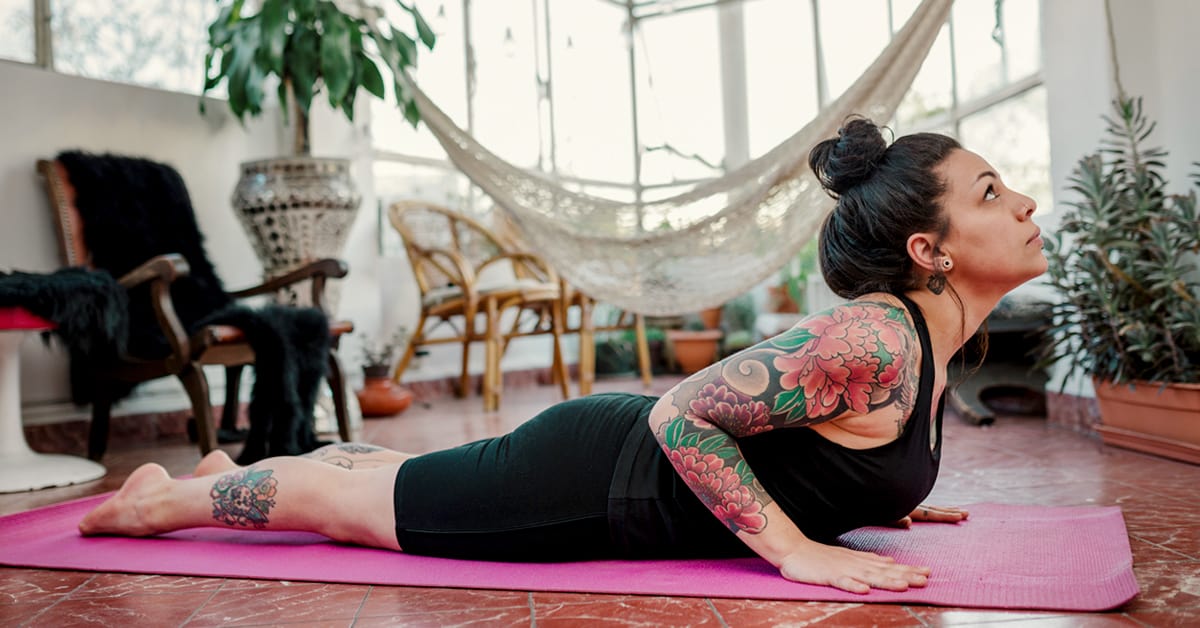
1. Manages Stress and Emotions
In ashtanga vinyasa yoga, you do every posture with a flow and breathing techniques; it creates some positive peaceful environment around you. This can help to release stress at the physical and mind level.
A review study of yoga published shows that “The postures along with breathing techniques help to trigger neurohormonal systems which indirectly help to reduce stress and anxiety.”
One more study about mastering emotional technique was carried out. The study evaluated the practice of yoga in college students. Results suggest that yoga in general is effective in improving emotions, self-compassion, mindfulness as well as reduces negative effects.
2. Improves Stability
In vinyasa yoga, it’s very important to follow a sequence which requires stability in every position with focus on breath. Focus on breathing slowly develops stability and balance in your asanas and at the mind level as well. Breathing techniques are a part of meditation.
A research study of athletes who practice yoga for 10 week shows improvement in stability and flexibility as compared to athletes who do not practice yoga.
3. Fosters Endurance
If you do yoga at a fast pace, it will help to build stamina and physical strength. You can do ashtanga vinyasa yoga with a fast pace as well; but only after mastering it. The practice will ultimately foster your endurance.
4. Aids in Weight Management
Practicing ashtanga vinyasa yoga helps with weight management. A pilot study among adolescents performing this form of yoga for three months shows that ashtanga yoga may be beneficial as a weight loss strategy.
5. Reduces PMS Symptoms
Yoga postures like the cobra, cat and fish poses help to reduce back pain, lower abdominal pain which are accompanied at the time of menstruation. A study involving 92 girls and women shows that yoga helps to reduce severity and intensity of PMS symptoms. As such, practicing ashtanga vinyasa yoga might also be helpful in reducing symptoms.
ASHTANGA VINYASA YOGA CLASS
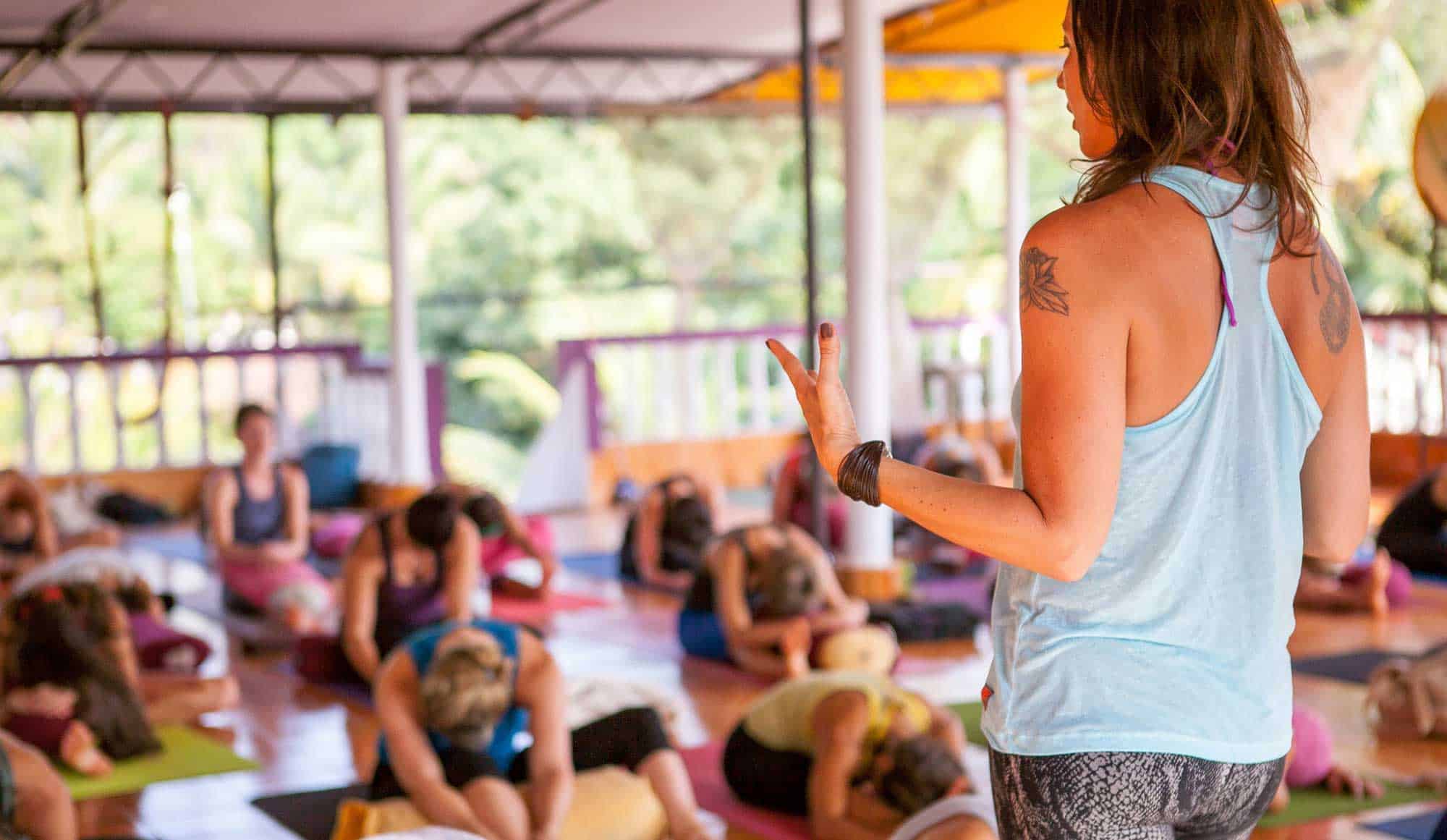
In a modern yoga class, everyone performs the same yoga poses regardless of their experience of learning yoga. Students follow the poses of the teacher of the class. But in this format, every student is assigned a yoga routine according to their experience level, ability, and physical strength.
Beginner students have less time of practice than experienced ones. As the student progresses towards more strength, stamina, flexibility with concentration, additional asanas are given to him. The postures are in a sequential order.
The structure of the class depends on the teacher who can keep track of what everyone is doing with a quick glance. Teachers should be able to help every student to maintain proper sequence and offer a modification to a student who has some difficulty to attain the posture.
Once the position and sequence are given to students, they should do that asana till they master it. When you master one series then only you are introduced to the next series. Traditionally practice takes place every day except for Saturday and full or new moon.
JOINING ASHTANGA VINYASA YOGA
There are different centers and academies, which will help you to learn vinyasa yoga. For an introduction, there are videos available online which you can follow and try out yourself before making a commitment.
Remember, the most important thing you need is always your desire and determination to do yoga. If you are determined to learn yoga and make a positive change to your life, don’t look back and go for it.
Yoga is great exercise and requires little accessories. Join a class in a center with good reviews. You only need to bring along your yoga mat.
SAFETY TIPS
- Do every posture slowly and steady, without any haste.
- Do not force yourself to master a posture in a day, it will require time and practice to attain the perfect posture.
- Try to inhale and exhale according to the position of your body, it will help you to relax your muscles.
- If you have any difficulties during the posture or related to breathing sequences, consult with your teacher. Do the proper sequence under the guidance of your yoga teacher.
- Bandhas: First learn them properly and then apply them in your practice.
- If you have any major illness or history of major surgeries, consult with your doctor before joining the yoga class or during the class, inform your yoga teacher about your medical condition. They will form a sequence of postures for you accordingly.
KEY TAKEAWAYS
Ashtanga Vinyasa Yoga is perfect for everyone because the class is designed according to your stamina, physical strength, and experience of yoga. When you do the same posture in the same way every time, you find harmony in it.
While practicing ashtanga yoga, you will notice physical and mental changes. So, give yourself a chance to do an ashtanga-vinyasa yoga to notice lifelong changes in your personality and body.
Article Sources
HealthxTips is committed to delivering content that adheres to highest standard for accuracy, sourcing and objective analysis.
HealthxTips uses only high-quality and trustworthy sources to support the facts in our articles.
1. Benavides, S., & Caballero, J. (2009). Ashtanga yoga for children and adolescents for weight management and psychological well being: an uncontrolled open pilot study. Complementary therapies in clinical practice, 15(2), 110–114. https://doi.org/10.1016/j.ctcp.2008.12.004
2. Patel, N. K., Nivethitha, L., & Mooventhan, A. (2018). Effect of a Yoga Based Meditation Technique on Emotional Regulation, Self-compassion and Mindfulness in College Students. Explore (New York, N.Y.), 14(6), 443–447.
https://doi.org/10.1016/j.explore.2018.06.008
3. Polsgrove, M. J., Eggleston, B. M., & Lockyer, R. J. (2016). Impact of 10-weeks of yoga practice on flexibility and balance of college athletes. International journal of yoga, 9(1), 27–34. https://doi.org/10.4103/0973-6131.171710
4. Rakhshaee Z. (2011). Effect of three yoga poses (cobra, cat and fish poses) in women with primary dysmenorrhea: a randomized clinical trial. Journal of pediatric and adolescent gynecology, 24(4), 192–196. https://doi.org/10.1016/j.jpag.2011.01.059
5. Sengupta P. (2012). Health Impacts of Yoga and Pranayama: A State-of-the-Art Review. International journal of preventive medicine, 3(7), 444–458.


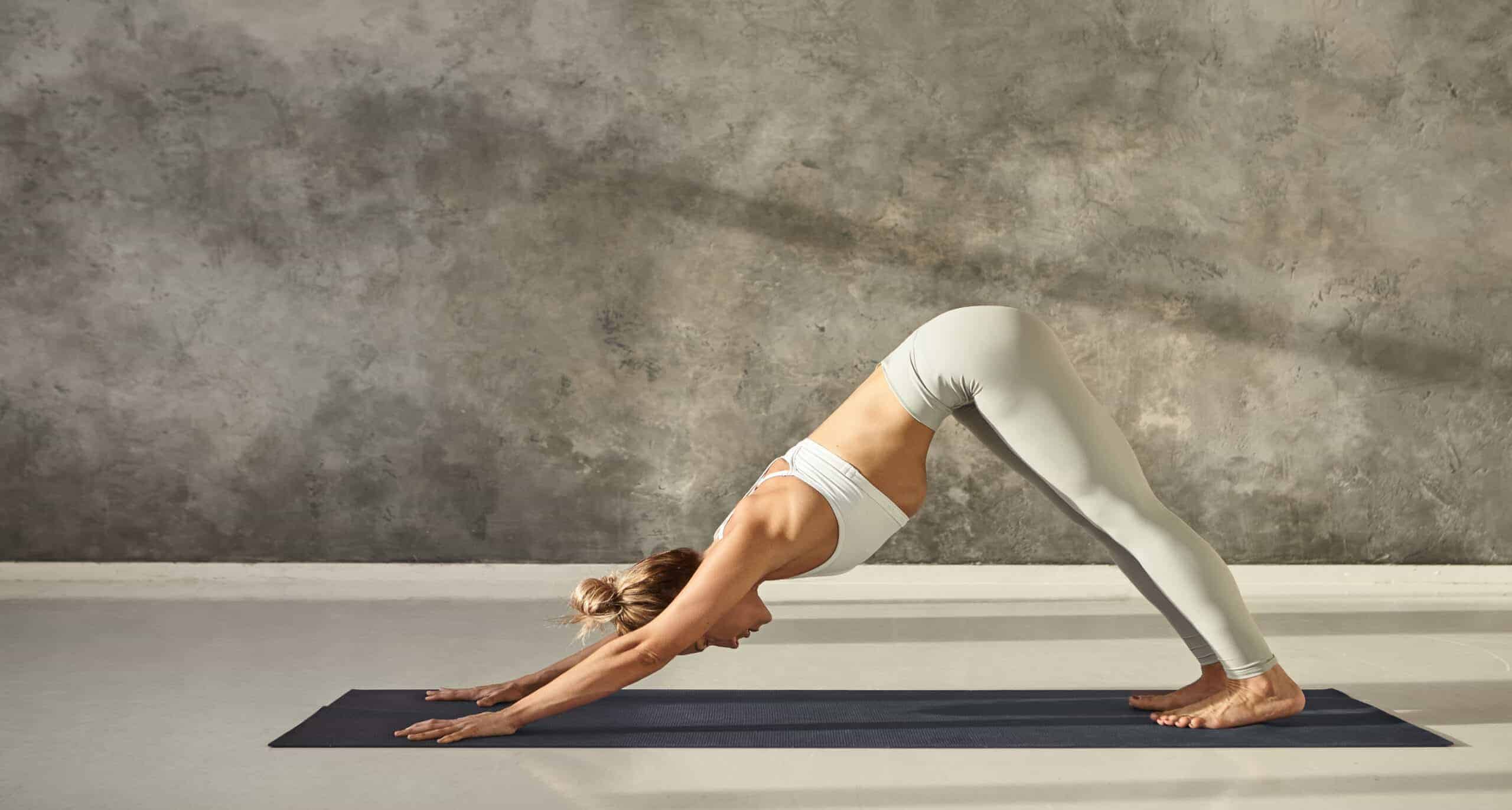


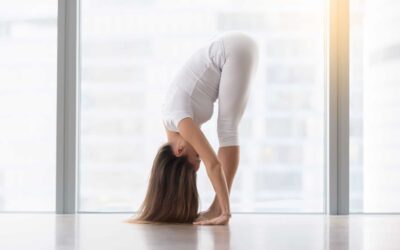
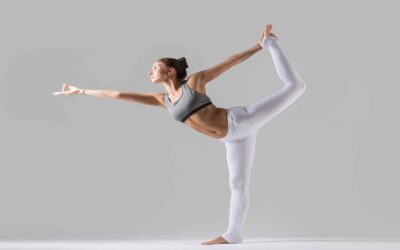
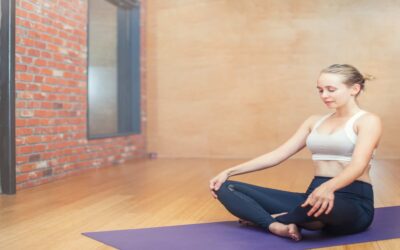
0 Comments